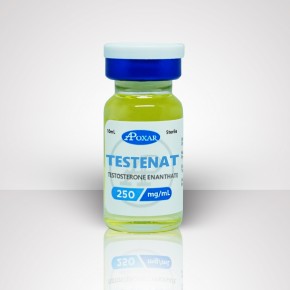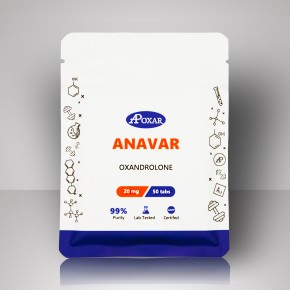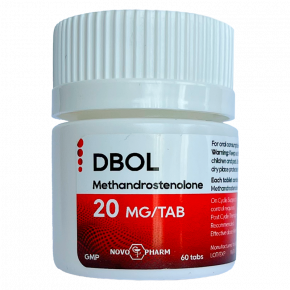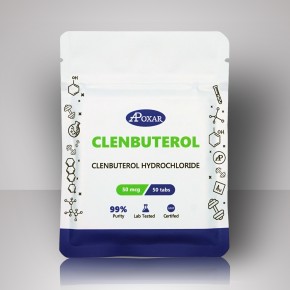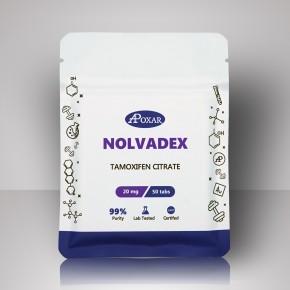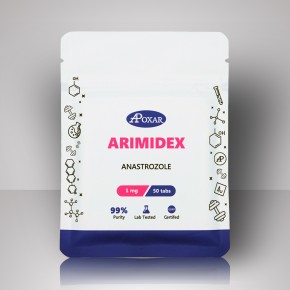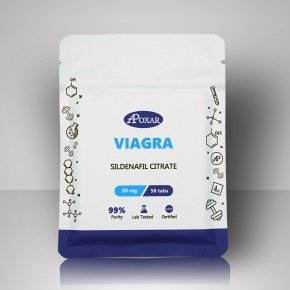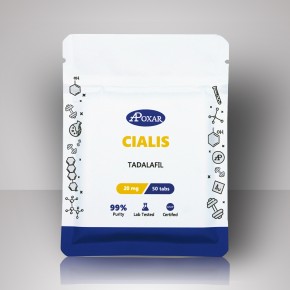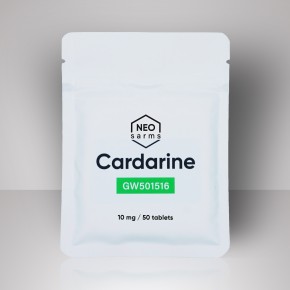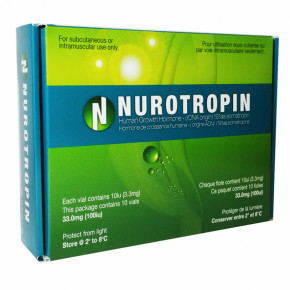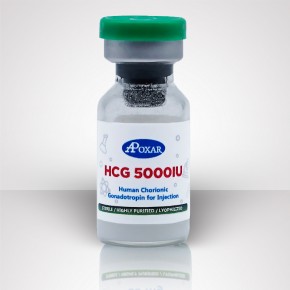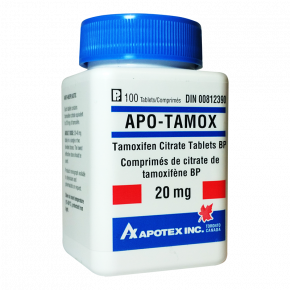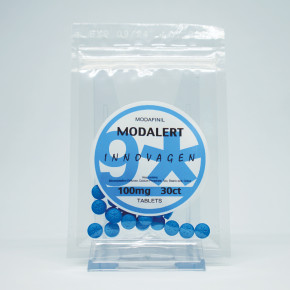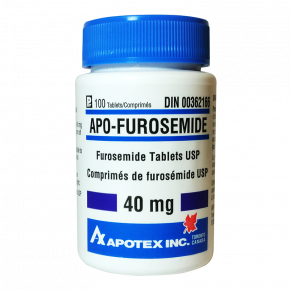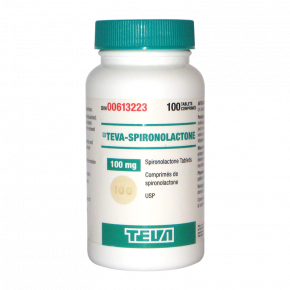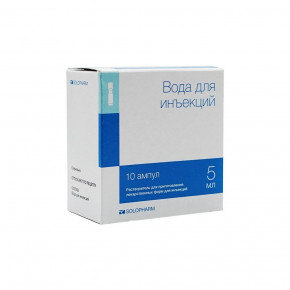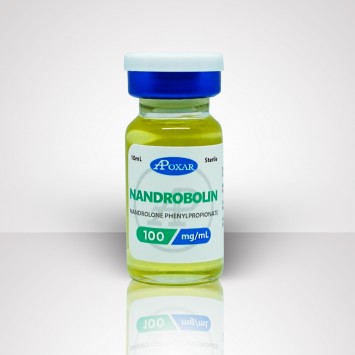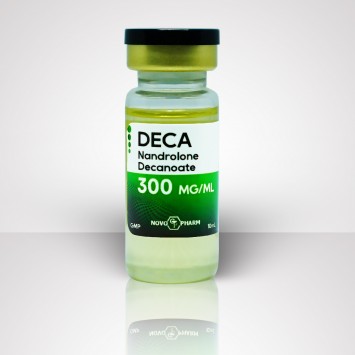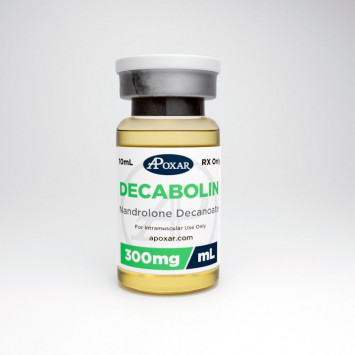 Free delivery for orders over $400
Free delivery for orders over $400Nandrolone
Nandrolone is an excellent steroid for gaining mass. Its beneficial effects include higher red blood cell production and a marked increase in appetite. Combines the best with Testosterone for bulking. 400-800mg/week for 8 weeks
-
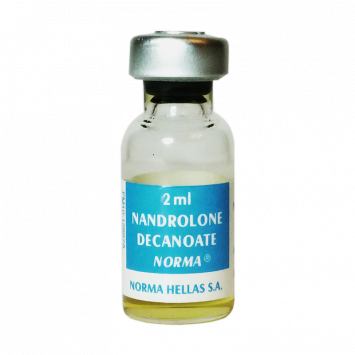
Nandrolone Decanoate 200mg/2ml - Norma Hellas
$18.00Out of stock
-
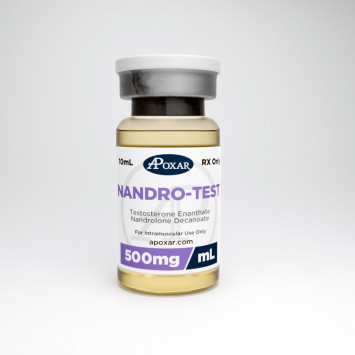
NandroTest (Deca/Test E) Blend 500mg/ml - Apoxar
$140.00Out of stock
Deca
Nandrolone decanoate is an injectable form of the anabolic steroid nandrolone. The decanoate ester provides a slow release of nandrolone from the site of injection, lasting for up to three weeks. Nandrolone is very similar to testosterone in structure, although it lacks a carbon atom at the 19th position (hence its other name, 19- nortestosterone). Like testosterone, nandrolone exhibits relatively strong anabolic properties. Unlike testosterone, however, its tissue-building activity is accompanied by weak androgenic properties. Much of this has to do with the reduction of nandrolone to a weaker steroid, dihydro nandrolone, in the same androgen-responsive target tissues that potentate the action of testosterone (by converting it to DHT). The mild properties of nandrolone decanoate have made it one of the most popular injectable steroids worldwide, highly favored by athletes for its ability to promote significant strength and lean muscle mass gains without strong androgenic or estrogenic side effects.
History
Nandrolone decanoate was first described in 1960 and became a prescription medication in 1962. It was developed by the international pharmaceuticals giant Organon and sold under the brand name Deca-Durabolin. The name Deca-Durabolin denotes that the product contains a variant of Organon’s previously popular nandrolone injectable Durabolin (nandrolone phenylpropionate) using an ester of 10 carbon atoms. Organon expanded the market for nandrolone decanoate very rapidly following its release. Probably owing to a combination of its favorable properties and the large market presence of Organon, Deca-Durabolin soon became one of the most widely distributed anabolic steroids in the world.
When first introduced to the United States, nandrolone decanoate (like Durabolin) was prescribed for a variety of ailments. Listed indications included pre- and postoperative use for building lean mass, osteoporosis, advanced breast cancer, weight loss due to convalescence or disease, geriatric states (general weakness and frailty), burns, severe trauma, ulcers, adjunct therapy with certain forms of anemia, and selective cases of growth and development retardation in children. The drug was initially sold in a dosage of only 50 mg/ml, owing to the very low recommended doses (usually 50-100 mg every 3-4 weeks). The drug was soon updated to include a 100 mg/ml version, reflecting the need for higher doses in some situations, particularly those with refractory anemia and advanced breast cancer. Later, a 200 mg/ml product was released by Organon as well.
Although the drug had been applied favorably for a great many medical uses for approximately a decade, by the mid-1970’s the indicated uses for nandrolone decanoate were being refined, both in the U.S. and abroad. FDA approved prescribing information from 1975 lists nandrolone decanoate as “probably effective” as an adjunct therapy in senile and postmenopausal osteoporosis, as well as for treating pituitary-deficient dwarfism until growth hormone is more available. It was also deemed “possibly effective” in aiding the retention of lean mass, controlling advanced breast cancer, and as adjunctive therapy for certain types of anemia. More time was given to investigate the potential “less than effective” uses of the drug.
Modern (approved) medical applications for the drug are even more refined than they were in the mid-1970s. In the United States, the drug is now only FDA approved for treating anemia, although it is often also used “off label” to preserve lean mass in HIV positive patients and others suffering from wasting diseases. Outside of the U.S., Organon seems to support the use of this drug mainly with patients suffering from severe anemia, osteoporosis, and advanced breast cancer. The Organon Deca-Durabolin brand of nandrolone decanoate remains widely available today, now distributed by new parent company Merck/MSD. In addition, nandrolone decanoate is produced as a generic drug in many countries and is also manufactured under numerous other distinctive brand names, both for human and veterinary use.
How Supplied
Nandrolone decanoate is widely available in human and veterinary drug markets. Composition and dosage may vary by country and manufacturer, but usually contain 25 mg/ml, 50 mg/ml, 100 mg/ml, or 200 mg/ml of steroid dissolved in oil.
Structural Characteristics
Nandrolone decanoate is a modified form of nandrolone, where a carboxylic acid ester (decanoic acid) has been attached to the 17-beta hydroxyl group. Esterified steroids are less polar than free steroids, and are absorbed more slowly from the area of injection. Once in the bloodstream, the ester is removed to yield free (active) nandrolone. Esterified steroids are designed to prolong the window of therapeutic effect following administration, allowing for a less frequent injection schedule compared to injections of free (unesterified) steroid. Nandrolone decanoate provides a sharp spike in nandrolone release 24-48 hours following deep intramuscular injection, which steadily declines to near baseline levels approximately two weeks later. The half-life of nandrolone decanoate is 7-12 days
Side Effects (Estrogenic)
Nandrolone has a low tendency for estrogen conversion, estimated to be only about 20% of that seen with testosterone. This is because while the liver can convert nandrolone to estradiol, in other more active sites of steroid aromatization such as adipose tissue nandrolone is far less open to this process. Consequently, estrogen-related side effects are a much lower concern with this drug than with testosterone. Elevated estrogen levels may still be noticed with higher dosing, however, and may cause side effects such as increased water retention, body fat gain, and gynecomastia. An anti-estrogen such as clomiphene citrate or tamoxifen citrate may be necessary to prevent estrogenic side effects if they occur. One may alternately use an aromatase inhibitor like Arimidex® (anastrozole), which more efficiently controls estrogen by preventing its synthesis. Aromatase inhibitors can be quite expensive in comparison to anti-estrogens, however, and may also have negative effects on blood lipids.
It is of note that nandrolone has some activity as a progestin in the body.1 Although progesterone is a c-19 steroid, removal of this group as in 19-norprogesterone creates a hormone with a greater binding affinity for its corresponding receptor. Sharing this trait, many 19-nor anabolic steroids are shown to have some affinity for the progesterone receptor as well. The side effects associated with progesterone are similar to those of estrogen, including negative feedback inhibition of testosterone production and enhanced rate of fat storage. Progestins also augment the stimulatory effect of estrogens on mammary tissue growth. There appears to be a strong synergy between these two hormones here, such that gynecomastia might even occur with the help of progestins, without excessive estrogen levels. The use of an anti-estrogen, which inhibits the estrogenic component of this disorder, is often sufficient to mitigate gynecomastia caused by nandrolone.
Side Effects (Androgenic)
Although classified as an anabolic steroid, androgenic side effects are still possible with this substance, especially with higher doses. This may include bouts of oily skin, acne, and body/facial hair growth. Anabolic/androgenic steroids may also aggravate male pattern hair loss. Women are warned of the potential virilizing effects of anabolic/androgenic steroids. These may include a deepening of the voice, menstrual irregularities, changes in skin texture, facial hair growth, and clitoral enlargement. Nandrolone is a steroid with relatively low androgenic activity relative to its tissue-building actions, making the threshold for strong androgenic side effects comparably higher than with more androgenic agents such as testosterone, methandrostenolone, or fluoxymesterone. It is also important to point out that due to its mild androgenic nature and ability to suppress endogenous testosterone, nandrolone is prone to interfering with libido in males when used without another androgen.
Note that in androgen-responsive target tissues such as the skin, scalp, and prostate, the relative androgenicity of nandrolone is reduced by its reduction to dihydro nandrolone (DHN).2 3 The 5-alpha reductase enzyme is responsible for this metabolism of nandrolone. The concurrent use of a 5-alpha reductase inhibitor such as finasteride or dutasteride will interfere with site-specific reduction of nandrolone action, considerably increasing the tendency of nandrolone to produce androgenic side effects. Reductase inhibitors should be avoided with nandrolone if low androgenicity is desired.
Side Effects (Hepatotoxicity)
Nandrolone is not c-17 alpha alkylated, and not known to have hepatotoxic effects in healthy subjects. Liver toxicity is unlikely.
Side Effects (Cardiovascular)
Anabolic/androgenic steroids can have deleterious effects on serum cholesterol. This includes a tendency to reduce HDL (good) cholesterol values and increase LDL (bad) cholesterol values, which may shift the HDL to LDL balance in a direction that favors greater risk of arteriosclerosis. The relative impact of an anabolic/androgenic steroid on serum lipids is dependant on the dose, route of administration (oral vs. injectable), type of steroid (aromatizable or non-aromatizable), and level of resistance to hepatic metabolism. Studies administering 600 mg of nandrolone decanoate per week for 10 weeks demonstrated a 26% reduction in HDL cholesterol levels.4 This suppression is slightly greater than that reported with an equal dose of testosterone enanthate and is in agreement with earlier studies showing a slightly stronger negative impact on HDL/LDL ratio with nandrolone decanoate as compared to testosterone cypionate. Nandrolone decanoate should still have a significantly weaker impact on serum lipids than c-17 alpha-alkylated agents. Anabolic/androgenic steroids may also adversely affect blood pressure and triglycerides, reduce endothelial relaxation, and support left ventricular hypertrophy, all potentially increasing the risk of cardiovascular disease and myocardial infarction.
Side Effects (Testosterone Suppression)
All anabolic/androgenic steroids, when taken in doses sufficient to promote muscle gain, are expected to suppress endogenous testosterone production. Studies administering 100 mg per week of nandrolone decanoate for 6 weeks have demonstrated an approximate 57% reduction in serum testosterone levels during therapy. At a dosage of 300 mg per week, this reduction reached 70%. It is believed that the progestational activity of nandrolone notably contributes to the suppression of testosterone synthesis during therapy, which can be marked in spite of a low tendency for estrogen conversion. Without the intervention of testosterone-stimulating substances, testosterone levels should return to normal within 2-6 months of drug secession. Note that prolonged hypogonadotrophic hypogonadism can develop secondary to steroid abuse, necessitating medical intervention.
Administration (Men)
For general anabolic effects, early prescribing guidelines recommend a dosage of 50-100 mg every 3-4 weeks for 12 weeks. To treat renal anemia, the prescribing guidelines for nandrolone decanoate recommend a dosage of 100- 200 mg per week. The usual dosage for physique- or performance-enhancing purposes is the range of 200-600 mg per week, taken in cycles 8 to 12 weeks in length. This level is sufficient for most users to notice measurable gains in lean muscle mass and strength. It is often stated that nandrolone decanoate will exhibit its optimal effect (best gain/side effect ratio) at 2 mg per pound of bodyweight/weekly, although individual differences in response will likely dictate varying ideal doses for different users. Deca is not known as a very “fast” builder. The muscle-building effect of this drug is quite noticeable, but not dramatic. In general, one can expect to gain muscle weight at about half the rate of that with an equal amount of testosterone.
Nandrolone decanoate is often combined with other steroids for an enhanced effect. A combination of 200-400 mg/week of nandrolone decanoate and 10-20 mg daily of Winstrol®, for example, is noted to greatly enhance the look of muscularity and definition when dieting/cutting. A strong non-aromatizing androgen like Halotestin® or trenbolone could also be used, again providing an enhanced level of hardness and density to the muscles. Being a moderately strong muscle builder, nandrolone can also be incorporated into bulk cycles with acceptable results. The classic “Deca and D-bol” stack (usually 200-400 mg of nandrolone decanoate per week and 15-25 mg of Dianabol per day) has been a bodybuilding basic for decades, and always seems to provide excellent muscle growth. A stronger androgen such as Anadrol 50® or testosterone could also be substituted, producing greater results, but with more water retention.
Administration (Women)
For general anabolic effects, early prescribing guidelines recommend a dosage of 50-100 mg every 3-4 weeks for 12 weeks. To treat renal anemia, the prescribing guidelines for nandrolone decanoate recommend a dosage of 50-100 mg per week. When used for physique- or performance-enhancing purposes, a dosage of 50 mg per week is most common, taken for 4-6 weeks. Although only slightly androgenic, women are occasionally confronted with virilization symptoms when taking this compound. Studies have demonstrated high tolerability (minor but statistically insignificant incidence of virilizing side effects) with a dose of 100 mg every other week for 12 weeks, while long-term studies (+12 months of use) have demonstrated virilizing side effects on a dose as low as 50 mg every 2-3 weeks.5 Should virilizing side effects become a concern, nandrolone decanoate should be discontinued immediately to help prevent their permanent appearance. After a sufficient period of withdrawal, the shorter-acting nandrolone Durabolin® might be considered a safer option. This drug stays active for only several days, greatly reducing the withdrawal time if indicated.
Availability
Nandrolone decanoate continues to decline in prominence as a pharmaceutical product due to its limited use in clinical medicine. The drug is presently unavailable in the United States. Many Western nations continue to market the drug, though its production is increasingly being shifted to less regulated markets in Asia. Legitimate pharmaceutical forms are highly sought after on the black market, and thus subject to a great deal of counterfeiting.
References:
- Competitive progesterone antagonists: receptor binding and biologic activity of testosterone and 19-nortestosterone derivatives. Reel JR, Humphrey RR, Shih YH, Windsor BL, Sakowski R, Creger PL, Edgren RA. Fertil Steril 1979 May;31(5):552-61.
- Different Pattern of Metabolism Determine the Relative Anabolic Activity of 19-Norandrogens. J Steroid Biochem Mol Bio 53:255-7,1995.
- Relative binding affinities of testosterone, 19-nortestosterone and their 5-alpha reduced derivatives to the androgen receptor and to other androgen-binding proteins: A suggested role of 5alpha-reductive steroid metabolism in the dissociation of “myotropic” and “androgenic” activities of 19- nortestosterone.Toth M, Zakar T. J Steroid Biochem 17 (1982):653-60.
- Metabolic effects of nandrolone decanoate and resistance training in men with HIV. Sattler FR, Schroeder ET, Dube MP, Jaque SV, Martinez C, Blanche PJ, Azen S, Krauss RM. Am J Physiol Endocrinol Metab. 2002 Dec;283(6):E1214-22. Epub 2002 Aug 27
- Nandrolone decanoate: Pharmacological properties and therapeutic use in osteoporosis. P Geusens. Clinical Rheumatology, 1995, 14, Suppl. 3.
Deca-Durabolin - NPP
Durabolin is a trade name for nandrolone phenylpropionate, an injectable form of the anabolic steroid nandrolone. The properties of this drug are strikingly similar to those of Deca-Durabolin®, which uses the slower acting drug nandrolone decanoate. The primary difference between these two preparations is the speed in which nandrolone is released into the blood. While nandrolone decanoate provides a release of nandrolone from the area of injection lasting approximately 3 weeks, nandrolone phenylpropionate is active for only about a week. In clinical situations, Deca-Durabolin can thus be injected once every 2 or 3 weeks, while Durabolin® is usually administered every several days to once weekly. Otherwise, the two drugs are virtually interchangeable. Like Deca-Durabolin, Durabolin is valued by athletes and bodybuilders for its abilities to promote strength and lean muscle mass gains without significant estrogenic or androgenic side effects.
History
Nandrolone phenylpropionate was first described in 1957. It became a prescription medication shortly after, sold by the international pharmaceuticals giant Organon (now Merck/MSD) under the brand name Durabolin. When first introduced to the United States, indicated uses of nandrolone phenylpropionate included pre- and postoperative lean mass retention, osteoporosis, advanced breast cancer, weight loss due to convalescence or disease, geriatric states (general weakness and frailty), burns, severe trauma, ulcers, adjunct therapy with certain forms of anemia, and selective cases of growth and development retardation in children. During the 1970s, the FDA began revising the indicated uses of this drug, however, and they were soon significantly narrowed. Moving forward, the drug was mainly being indicated for the treatment of advanced metastatic breast cancer, and as an adjunct therapy for the treatment of senile and postmenopausal osteoporosis.
Durabolin was a key focus of Organon’s marketing efforts only for well less than a decade following its release. Once Deca-Durabolin was introduced during the 1960s, this shorter-acting counterpart, although still available, started to take a back seat. Durabolin was not completely abandoned by Organon at the time, however, partly due to the fact that it was given a slightly different set of therapeutic uses in certain countries, and therefore continued to hold onto a niche market for some time. As the size of the anabolic steroid market continued to grow throughout the 1970s and ’80s, it was nandrolone decanoate that was attracting the most attention of other drug manufacturers. Numerous drug companies had produced their own versions of nandrolone phenylpropionate over the years, however. Today, the drug remains scarcely available. It is unknown if the present owner of Organon (Merck/MSD) will market Durabolin, or if its production (as a brand name product) has ended.
How Supplied
Nandrolone phenylpropionate is available in select human drug markets. Composition and dosage may vary by country and manufacturer, but usually contain 25 mg/mL or 50 mg/mL of steroid dissolved in oil.
Structural Characteristics
Nandrolone phenylpropionate is a modified form of nandrolone, where a carboxylic acid ester (propionic phenyl ester) has been attached to the 17-beta hydroxyl group. Esterified steroids are less polar than free steroids, and are absorbed more slowly from the area of injection. Once in the bloodstream, the ester is removed to yield free (active) nandrolone. Esterified steroids are designed to prolong the window of therapeutic effect following administration, allowing for a less frequent injection schedule compared to injections of free (unesterified) steroid. Nandrolone phenylpropionate provides a sharp spike in nandrolone release 24-48 hours following deep intramuscular injection and declines to near baseline levels within a week.
Side Effects (Estrogenic)
Nandrolone has a low tendency for estrogen conversion, estimated to be only about 20% of that seen with testosterone. This is because while the liver can convert nandrolone to estradiol, in other more active sites of steroid aromatization such as adipose tissue nandrolone is far less open to this process. Consequently, estrogen-related side effects are a much lower concern with this drug than with testosterone. Elevated estrogen levels may still be noticed with higher dosing, however, and may cause side effects such as increased water retention, body fat gain, and gynecomastia. An anti-estrogen such as clomiphene citrate or tamoxifen citrate may be necessary to prevent estrogenic side effects if they occur. One may alternately use an aromatase inhibitor like Arimidex® (anastrozole), which more efficiently controls estrogen by preventing its synthesis. Aromatase inhibitors can be quite expensive in comparison to anti-estrogens, however, and may also have negative effects on blood lipids.
It is of note that nandrolone has some activity as a progestin in the body. Although progesterone is a c-19 steroid, removal of this group as in 19-norprogesterone creates a hormone with a greater binding affinity for its corresponding receptor. Sharing this trait, many 19-nor anabolic steroids are shown to have some affinity for the progesterone receptor as well. The side effects associated with progesterone are similar to those of estrogen, including negative feedback inhibition of testosterone production and enhanced rate of fat storage. Progestins also augment the stimulatory effect of estrogens on mammary tissue growth. There appears to be a strong synergy between these two hormones here, such that gynecomastia might even occur with the help of progestins, without excessive estrogen levels. The use of an anti-estrogen, which inhibits the estrogenic component of this disorder, is often sufficient to mitigate gynecomastia caused by nandrolone.
Side Effects (Androgenic)
Although classified as an anabolic steroid, androgenic side effects are still possible with this substance, especially with higher doses. This may include bouts of oily skin, acne, and body/facial hair growth. Anabolic/androgenic steroids may also aggravate male pattern hair loss. Women are warned of the potential virilizing effects of anabolic/androgenic steroids. These may include a deepening of the voice, menstrual irregularities, changes in skin texture, facial hair growth, and clitoral enlargement. Nandrolone is a steroid with relatively low androgenic activity relative to its tissue-building actions, making the threshold for strong androgenic side effects comparably higher than with more androgenic agents such as testosterone, methandrostenolone, or fluoxymesterone. It is also important to point out that due to its mild androgenic nature and ability to suppress endogenous testosterone, nandrolone is prone to interfering with libido in males when used without another androgen.
Note that in androgen-responsive target tissues such as the skin, scalp, and prostate, the relative androgenicity of nandrolone is reduced by its reduction to dihydro nandrolone (DHN).1
The 5-alpha reductase enzyme is responsible for this metabolism of nandrolone. The concurrent use of a 5-alpha reductase inhibitor such as finasteride or dutasteride will interfere with site-specific reduction of nandrolone action, considerably increasing the tendency of nandrolone to produce androgenic side effects. Reductase inhibitors should be avoided with nandrolone if low androgenicity is desired.
Side Effects (Hepatotoxicity)
Nandrolone is not c-17 alpha alkylated, and not known to have hepatotoxic effects. Liver toxicity is unlikely.
Side Effects (Cardiovascular)
Anabolic/androgenic steroids can have deleterious effects on serum cholesterol. This includes a tendency to reduce HDL (good) cholesterol values and increase LDL (bad) cholesterol values, which may shift the HDL to LDL balance in a direction that favors greater risk of arteriosclerosis. The relative impact of an anabolic/androgenic steroid on serum lipids is dependant on the dose, route of administration (oral vs. injectable), type of steroid (aromatizable or non-aromatizable), and level of resistance to hepatic metabolism. Studies administering 600 mg of nandrolone decanoate per week for 10 weeks demonstrated a 26% reduction in HDL cholesterol levels. This suppression is slightly greater than that reported with an equal dose of testosterone enanthate and is in agreement with earlier studies showing a slightly stronger negative impact on HDL/LDL ratio with nandrolone decanoate as compared to testosterone cypionate. Nandrolone should still have a significantly weaker impact on serum lipids than c-17 alpha-alkylated agents. Anabolic/androgenic steroids may also adversely effect blood pressure and triglycerides, reduce endothelial relaxation, and support left ventricular hypertrophy, all potentially increasing the risk of cardiovascular disease and myocardial infarction.
Side Effects (Testosterone Suppression)
All anabolic/androgenic steroids, when taken in doses sufficient to promote muscle gain, are expected to suppress endogenous testosterone production. Studies administering 100 mg injection of nandrolone phenylpropionate demonstrated a rapid suppression of serum testosterone following a single injection. Testosterone levels declined to approximately 30% of initial level by day 3 after drug administration and stayed suppressed for approximately 13 days. Regular use is expected to significantly lengthen the endogenous hormone recovery window. It is believed that the progestational activity of nandrolone notably contributes to the suppression of testosterone synthesis during therapy, which can be marked in spite of a low tendency for estrogen conversion. Without the intervention of testosterone-stimulating substances, testosterone levels should return to normal within 2-6 months of drug secession. Note that prolonged hypogonadotrophic hypogonadism can develop secondary to steroid abuse, necessitating medical intervention.
Administration (Men)
For general anabolic effects, early prescribing guidelines recommend a dosage of 25-50 mg per week for 12 weeks. The usual dosage for physique- or performance-enhancing purposes is in the range of 200-400 mg per week, taken in cycles 8 to 12 weeks in length. This level is sufficient for most users to notice measurable gains in lean muscle mass and strength. Note that due to the fastacting nature of the phenylpropionate ester, the weekly dosage is usually subdivided into 2 separate applications spaced evenly apart.
Administration (Women)
For general anabolic effects, early prescribing guidelines recommend a dosage of 25-50 mg per week for 12 weeks. When used for physique- or performance-enhancing purposes, a dosage of 50 mg per week (given in a single weekly injection) is most common, taken for a cycle lasting 4 to 6 weeks. Higher doses or longer durations of use are discouraged due to the potential for androgenic side effects. Although only slightly androgenic, women are occasionally confronted with virilization symptoms when taking this compound. Should virilizing side effects become a concern, nandrolone phenylpropionate should be discontinued immediately to help prevent a permanent appearance.
Availability
Nandrolone phenylpropionate has declined extensively as a pharmaceutical product. Given its short action, and the limited use of its longer-acting cousin nandrolone decanoate in clinical medicine, there are very few (if any) unique applications remaining for this drug. Thus, there is little justification for its continued production.
Brand name Durabolin appears to be unavailable in all markets worldwide. A small number of generic and brand name products remain in less regulated markets (mainly in Asia), due to continued demand by athletes and bodybuilders.
References:

